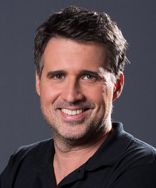
Shaping the future of stroke care
- By Philips
- March 03 2025
- 3 min read
Acute ischemic stroke is the second leading cause of mortality and a key cause of long-term disability worldwide1. Globally, one in four adults over the age of 25 will have a stroke in their lifetime2. Speed is key to delivering time-sensitive, life-saving care. But while hope lies in seconds saved, an average of 40% of stroke patients arrive too late for basic stroke treatment3. By 2050, we can expect over 30 million new stroke cases every year4. Could we do more together to speed up stroke care and prevent a potential 12 million deaths from stroke4?
At-a-glance:
- The current landscape in stroke care
- The global and local burden of stroke
- Economic challenges in stroke care
- Advancing stroke care to save lives

Technology alone is not enough to transform stroke care
There is no doubt that recent developments in stroke care have been revolutionary. Multiple randomized trials have proven the efficacy of mechanical thrombectomy (MT) for rapid intervention in stroke patients with large vessel occlusions. The results speak for themselves. Despite the overwhelming evidence proving the effectiveness of MT, only a fraction of stroke patients have access to this treatment 5.
For health systems that are able to perform MT, there are still many barriers to overcome prior to intervention. These include the availability of trained staff, access to neuro intensive care unit (ICU) beds, and coordination and scheduling of acute patients across regional and country-wide stroke networks. All of which combined can result in the severe undertreatment of stroke patients.
Mechanical thrombectomy has a treatment effect for stroke patients that is so powerful, it is almost unheard of in modern medicine.

Mayank Goyal
Clinical Professor, Department of Radiology and Clinical Neurosciences
University of Calgary, Canada
In this positioning paper, we discuss how best to accelerate the pace of change, and enable health systems to establish the infrastructure and accessibility they require by augmenting access to MT and optimizing the stroke care pathway.
Connecting the dots between caregivers
Our data-driven insights into stroke care infrastructure and inefficiencies reveal the uncomfortable reality of stroke epidemiology on a global and local scale. From marked differences between countries, to inequalities between rural and urban communities, they demonstrate that there is a large variation in access to resources such as 24/7 centers, stroke networks and qualified staff; a situation that must be addressed if we are to encourage the adoption of MT and realize its true potential.
The positioning paper explains why the first vital step in innovating the stroke pathway is to connect the dots between caregivers. It reveals the key solutions that could accelerate care, from integrated networks with simple sharing capabilities to effective ways to reduce uncertainty at first medical contact.
Direct-to-Angio-Suite workflow has shown a significant improvement in clinical outcomes in patients who suffered a stroke.

Dr. Marc Ribó
WE-TRUST study co-Principal Investigator, Int. Neurologist at the Vall d’Hebron University Hospital
The Stroke Research group at the Vall d’Hebron Research Institute (Spain).
Innovations and improvements for current modalities and workflows are also investigated, including why adopting a Direct-to-Angio-Suite (DTAS) approach supports time-saving transfer, drastically reduces the time to treatment, and potentially improves patient outcomes.
Dive into the data
Gaps in information, communication and access to stroke expertise can cause delays that have tragic consequences for stroke patients. Together we can reduce the impact of stroke events, potentially enabling patients to get back to living the lives they love. To learn more and discover how optimizing the stroke pathway can connect care, save precious time, and with that lives, download the positioning paper today.
Copy this URLto share this story with your professional network
Sign up for news and updates

Footnotes
- www.who.int/data/gho/data/themes/mortality-and-global-health-estimates
- www.stroke.org/en/life-after-stroke/preventing-another-stroke
- Saver JL, et al., Stroke. 2010 Jul;41(7):1431-9. The “golden hour” and acute brain ischemia: presenting features and lytic therapy in >30,000 patients arriving within 60 minutes of stroke onset.
- www.thelancet.com/article/S1474-4422%2821%2900252-0/fulltext
- Action Plan for Stroke in Europe 2018–2030 - PMC (nih.gov)
Disclaimer
Results are specific to the institution where they were obtained and may not reflect the results achievable at other institutions. Results in other cases may vary.